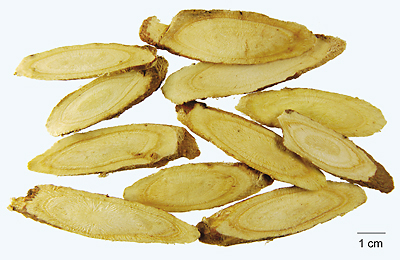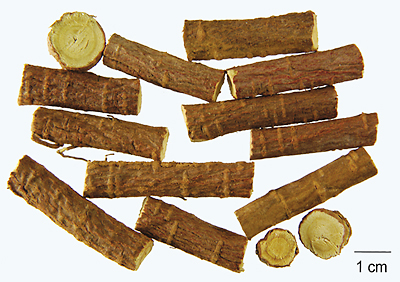Liquorice Root
Liquorice Root
Gancao
甘草
Source
The root and rhizome of Glycyrrhiza uralensis Fisch. (Fam. Leguminosae).
Distribution
Mainly in Chinese provinces such as Gansu, and in Xinjiang, Inner Mongolia and the western part of northeastern China.
Harvest & Processing
Dig out roots and rhizomes in spring and autumn, with the ones collected in spring of better quality; cut away caudexes, young buds, branch roots and fibrous roots while fresh; cut roots and rhizomes into long sections; dry under the sun.
Description
Root cylindrical; 25-100 cm long, 0.6-3 cm in diameter. Bark varies in tightness; reddish-brown or greyish-brown; marked with conspicuous longitudinal wrinkles, grooves and sparse rootlet scars; lenticels lalongate (transversely elongated). Hard and solid; heavy; when broken, surface slightly fibrous, yellowish-white, starchy, marked with a conspicuous cambium ring, radial markings and clefts. Rhizome cylindrical; outer surface with bud scars; cross-section with pith in the centre. Odour: faint; taste: sweet and distinctive.
Indications
1. Sore throat, cough
2. Gastric hyposecretion, gastroduodenal ulcer
3. Hysteria
4. Dermatitis and boils
5. Drug and food poisoning
Chemical Composition
Mainly contains triterpene saponins such as glycyrrhizin, also contains flavonoids such as liquiritin.
Note
According to C.P., also used for medicinal purposes is the root of G. inflata Bat. and of G. glabra L.
Photos


